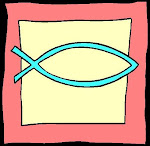 located. While trying cover the entire stream with your casts might be one method of attack, it will usually result in spooking otherwise attainable trout and make for an empty handed day.
located. While trying cover the entire stream with your casts might be one method of attack, it will usually result in spooking otherwise attainable trout and make for an empty handed day.The best approach, in my experience, is to think about the trout and what it is that they need to sustain them. Apart from juicy bugs, all trout need protection and food, and more importantly, they need to not expend much energy in their efforts to obtain both.
Trout will most often position themselves in a location that affords relatively quick access to protection from predators, including birds of prey and crazed fishermen intent on tromping through the stream waiving a big stick. Look for trout near undercut banks and fallen trees. They don't necessarily have to be in those areas but near enough to get to protection with little effort.
Trout will also position themselves in well-aerated and generally slower moving water. In pocket water, look for trout in a pool that is moving with an inlet and outlet. The trout prefer water that is moving at a rate of about one foot per second; enough to hold them in position and bring food their way, but slow enough to afford a quick exit if danger threatens. In larger streams, I like to look for trout where fater water in the center of the stream meets slower water along the edges or at the bend of a curve. This "seam" is a great place to prospect for trout because the faster water is providing a continuous smorgesbord of tasty delights for the trout yet, the slower water, especially near protection, allows for a sudden retreat.
Next time you're out on an unfamiliar stream, think about the trout's needs and not so much about complicated entymology. Become the fish. You will cut your prospecting time in half and not come away empty handed!


